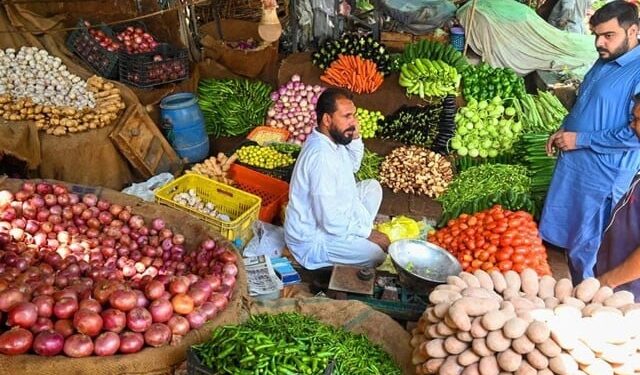Introduction: Rising Inflation Casts Shadow Over Upcoming Budget
As Pakistan prepares to unveil its budget for the new fiscal year, concerns are growing over a potential spike in inflation, even before the budget announcement. The Federal Ministry of Finance, in its recently issued Monthly Economic Update and Outlook Report, has sounded the alarm, projecting an increase in inflationary pressures that could affect key economic indicators and impact citizens’ purchasing power.
This warning comes at a time when the government is already facing the challenge of balancing fiscal discipline with public welfare, amidst ongoing talks with the International Monetary Fund (IMF) and a fragile economic recovery.
Inflation Forecast: New Worries Before Budget Announcement
Short-Term Inflation Likely to Rise by 3–4% Next Month
According to the Finance Ministry’s Monthly Economic Outlook, inflationary pressures are expected to rise in the coming weeks. While the report notes that inflation in the month of April was modest at 0.3 percent, it cautions that monthly inflation may climb to 1.5 to 2 percent in May, and could further rise to 3 to 4 percent in June, just before or after the announcement of the federal budget.
Economists believe this uptick could be fueled by several factors including:
- Anticipated hikes in fuel and utility prices,
- Supply chain disruptions in key sectors,
- Devaluation of the Pakistani rupee,
- Budgetary measures such as new taxes or removal of subsidies.
These fears are particularly relevant as food and energy costs already consume a large portion of household income in Pakistan, making consumer price inflation a politically sensitive issue.
Economic Indicators Show Mixed Trends
Positive Growth in Remittances and Exports
Despite concerns about inflation, the report highlights several positive economic indicators. One of the most encouraging developments has been the increase in worker remittances, which saw a 30.9 percent surge during the first 10 months (July-April) of the current fiscal year. Remittances totaled $31.21 billion, providing much-needed support to Pakistan’s foreign exchange reserves and helping stabilize the current account.
Additionally, exports rose by 6.8 percent, reaching $27.27 billion in the same period. This growth in exports is primarily driven by sectors such as textiles, rice, and leather goods, which benefited from favorable exchange rates and improved global demand.
Manufacturing Sector Sees Gradual Recovery
Vehicle Production and Raw Material Imports Improve
The large-scale manufacturing (LSM) sector, which accounts for a significant portion of Pakistan’s industrial output, has shown signs of gradual recovery. While the cumulative data from July to March shows a 1.47 percent decline in LSM, there have been notable improvements in vehicle production and the import of industrial raw materials.
These signs of recovery suggest that the manufacturing sector may rebound in the remaining months of the fiscal year, particularly if macroeconomic stability is maintained. This recovery is critical for job creation, revenue generation, and export performance, all of which are essential for sustainable economic growth.
Agriculture Sector Poised for Improvement
Weather and Water Conditions Support Crop Yields
The Ministry of Finance’s report expresses optimism regarding the agricultural sector, which is the backbone of Pakistan’s rural economy. Favorable weather conditions and improved water availability are expected to boost agricultural productivity, especially for wheat, sugarcane, rice, and cotton crops.
Enhanced agricultural performance is likely to:
- Improve rural incomes,
- Stabilize food prices,
- Reduce import dependency for staple crops,
- Strengthen the GDP growth trajectory.
This is a crucial development as food inflation has remained a persistent challenge over the past year, largely due to low crop yields, hoarding, and weak supply chain mechanisms.
Current Account Surplus and Import Trends
Pakistan Maintains Surplus but Faces Rising Import Costs
Another important highlight from the report is that Pakistan’s current account balance remained in surplus at $1.88 billion during the first 10 months of the fiscal year. This surplus was supported by the rise in remittances and exports, although imports also surged by 11.8 percent, reaching $48.61 billion.
The increase in imports is largely attributed to:
- Higher global commodity prices,
- Rising demand for machinery and industrial inputs,
- Import of petroleum products to meet domestic energy needs.
While a current account surplus is generally a positive sign, the growing import bill could put pressure on foreign reserves and exchange rates if not carefully managed in the coming months.
Foreign Direct Investment Declines Slightly
FDI Down by 2.8% Amid Global Uncertainty
The Ministry’s report reveals that foreign direct investment (FDI) declined by 2.8 percent, with the total volume reaching $1.78 billion during the review period. The decline reflects global investor caution, domestic political uncertainty, and concerns over regulatory and policy inconsistencies.
To attract higher FDI inflows, experts suggest that the government must:
- Improve the ease of doing business,
- Ensure regulatory transparency,
- Offer incentives in high-potential sectors such as technology, renewable energy, and tourism.
Tax and Non-Tax Revenue Collections on the Rise
Encouraging Trends in Government Revenue
In terms of fiscal performance, the government has made notable progress in revenue collection. The Ministry reported a 26.3 percent increase in tax revenue, totaling Rs9,300 billion from July to April. At the same time, non-tax revenues saw a dramatic rise of 69.9 percent, amounting to Rs4,099 billion.
This robust revenue performance is crucial for:
- Meeting fiscal targets,
- Reducing the budget deficit,
- Financing development programs without heavy reliance on borrowing.
The growth in non-tax revenue is largely driven by profits from the State Bank of Pakistan, petroleum levies, and dividends from public sector enterprises.
State Bank Reserves Increase, But Challenges Remain
Forex Reserves Rise to $11.4 Billion
The State Bank of Pakistan (SBP) has successfully increased its foreign exchange reserves to $11.4 billion, thanks to inflows from remittances, export earnings, and IMF disbursements. This cushion provides the government with greater flexibility in managing exchange rate volatility, paying off external debt, and covering import bills.
However, sustaining this reserve level will depend on:
- Continuation of IMF support,
- Avoiding sharp currency depreciation,
- Boosting exports and reducing non-essential imports.
Conclusion: Inflation Risks Demand Cautious Budgeting
As Pakistan nears the federal budget announcement for fiscal year 2025–26, the Finance Ministry’s latest report underscores the dual reality of the economy—encouraging macroeconomic trends on one hand, and persistent inflationary risks on the other.
With global economic headwinds, domestic structural issues, and IMF conditionalities looming large, the upcoming budget will need to strike a delicate balance between economic stabilization and public relief. Measures to control inflation, protect vulnerable segments, and stimulate sustainable growth will be key to maintaining public confidence and investor interest in Pakistan’s economic recovery.

























